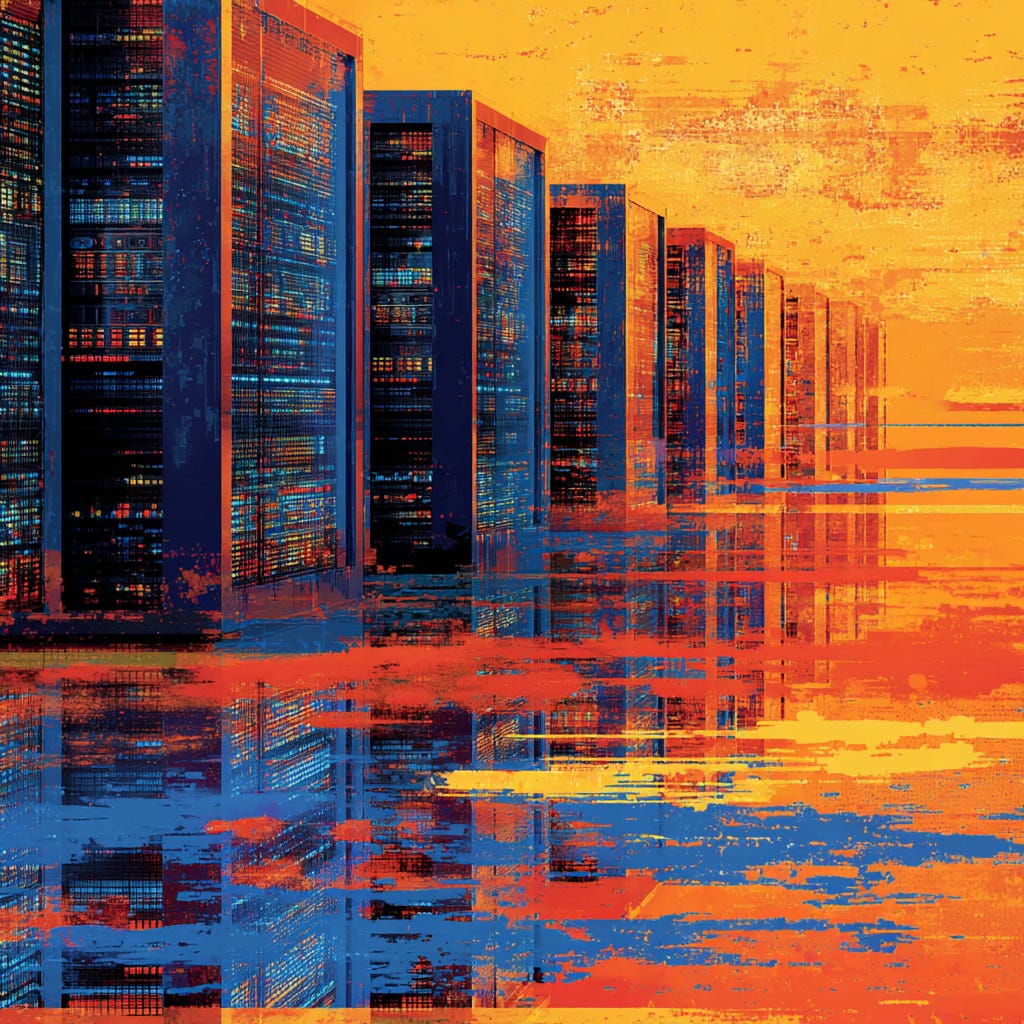The Coming Compute Glut and What Happens After the Data Center Boom
Across private and public markets, AI valuations increasingly resemble a speculative bubble, and the industry conversation has shifted from models and products to securing data centers, power, and long-term compute. We’ve seen this dynamic before: in the late 1990s, investors overbuilt fiber infrastructure based on the belief that demand would be limitless. When the returns didn’t arrive on schedule, the bubble collapsed, leaving excess “dark fiber” that became the backbone of Web 2.0 and still carries internet traffic today—benefiting those who capitalized on the surplus, not those who originally financed it. The question now is whether today’s rush to build GPU and power infrastructure will follow the same arc.
The Present: Data Centers as the New Oil Fields
Right now, hyperscalers, private equity firms, sovereign wealth funds, and a wave of new data center developers are racing to build capacity at breakneck speed. GPU clusters are being financed with the same ambition and spectacle once reserved for skyscrapers in Dubai. In some regions, particularly California and Washington, data center power demand now exceeds residential demand, shifting energy planning priorities from households to compute.
Some fundamentals driving the build-out:
AI model training scales with compute, which scales with data center capacity.
Hyperscalers want to control their own supply chains – no one wants to be caught short.
Sovereign governments want AI sovereignty.
Every enterprise boardroom has decided that “we need an AI strategy” even if they can’t yet articulate one.
But here’s the subtle point:
We are over-building faster than the market can productively absorb the capacity.
Not permanently. Not forever.
But for the next 2–4 years, the pace of model performance gains, application deployment, and enterprise adoption will be slower than the speed at which we are adding space, power, and racks.
In other words: We are building the highways before the cars exist.
The Parallel to Dark Fiber
This period rhymes almost perfectly with 1998–2000:
In the late 1990s, fiber networks were overbuilt on the belief that internet demand would grow endlessly; when it didn’t, the bubble burst and the unused “dark fiber” later became the cheap backbone of Web 2.0.
Today, from 2023 to 2026, data centers and GPU clusters are being built on the same premise of inevitable AI demand. If near-term workloads don’t catch up, we may see consolidation and repricing—but the eventual surplus could become the foundation for a new wave of AI-native products.
The real breakthrough in both eras comes after the overbuild.
The mistakes are made by those who believe the current demand curve continues unbroken. The opportunities are captured by those who build on top of the resulting abundance.
The Web 2.0 boom was powered by the cheap bandwidth and compute originally built for Web 1.0.
Likewise: The AI application boom will be powered by cheap GPU cycles originally built for the foundation model arms race.
The Hangover Phase Is Not a Crisis
It’s the Setup for the Next Wave
When the industry hits the inevitable plateau:
Capacity will exceed demand
GPU utilization rates will fall
Pricing will normalize downward
Distressed data center assets will change hands
Hyperscalers will renegotiate contracts
And private equity will quietly get very busy
This isn’t a story of collapse so much as a story of capital cycles, where the early infrastructure builders set the stage for others to capture the long-term value.
Today, the companies that use the abundant infrastructure most creatively include:
Netflix didn’t win by building fiber;
Snowflake didn’t win by building cloud; and
OpenAI didn’t build data centers, but it used them early and exceptionally effectively.
The lesson is simple: during a gold rush, the real winners aren’t the prospectors, but the ones selling the picks, shovels, denim, pans and running general stores.
So, What Will Be Built on the Overbuild?
Here’s the updated list with a clear, crisp fourth category added:
Four categories stand out:
AI-Native Applications. Tools that solve real problems rather than just generating text or images.
Autonomous Decision Systems. Agents that execute tasks and produce work output, not just recommendations.
Enterprise AI That Actually Works. Systems that integrate into existing workflows and deliver measurable ROI without heroics.
AGI and Super-Intelligence Systems. Self-improving, open-ended reasoning systems that pursue goals, learn continuously, and operate beyond narrow task boundaries.
The companies that win the next wave will be the ones that:
Take advantage of lower inference costs
Don’t have to compete with well-funded foundation model labs for GPUs
Build products for real users and business processes
Transition from experimental prototypes to advanced, continuously improving production systems.
If You’re a Founder or Investor Right Now
Here’s the strategic takeaway:
Don’t compete in the data center build-out unless you have unfair access to capital and power.
Don’t just chase model performance, chase customer outcomes.
Prepare for GPU and compute pricing to fall.
Plan your business around the post-overbuild world, not the mania phase.
The real value arrives only after the infrastructure becomes cheap, reliable, and abundant. That’s when the world actually changes. The future isn’t the data centers themselves. It’s what we build once the hype fades, the costs drop, and the lights stop blinding us. And in the end, that’s where the real, long-term enterprise value is created.



This article comes at the perfect time, and I really appreciated the insightful parallel with the 'dark fiber' era. Do you think future innovators will similary capitalize on this 'compute glut'?